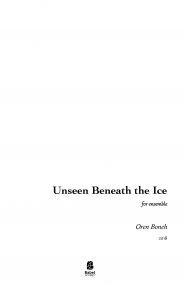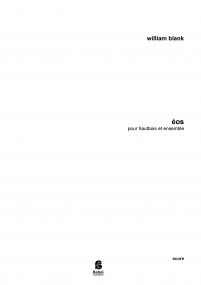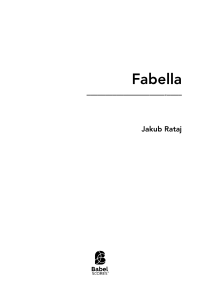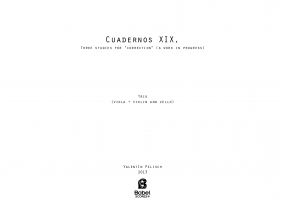Mundus Imaginalis
pour ensemble
14,00 €
Digital version (+0,00 €) instant download
When you buy a score, you can contact the composer right here!
Specifications
Region
Europe
Estimated Duration
16 - 20min
Date
2015
ISMN : 979-0-2325-3243-1
Notes on this piece
Add to a playlist
- Login to create your own lists
Mundus Imaginalis
Program notes
In a note in the Italian philosopher Massimo Cacciari’s book “The Necessary Angel,” the translator of the English version states that the “mundus imaginalis” (a term mentioned by Cacciari but first coined by the French philosopher Henri Corbin in relation to the experience of angelic realms by Persian mystics) can be perceived by the imaginary faculty, which is “the intermediary organ between sensible perception and intellectual intuition.” I have long been fascinated by the often intensely conflictual relationship between the intellectual and sensible (revelatory) dimensions involved in creating a work of art. For a number of years now, I have devised strategies aiming at keeping these two inner worlds in a precarious and fruitful balance. In Mundus imaginalis this complex relationship is presented in a movement from the exterior toward the interior world of the sound, as a journey from the outside world toward an inside one.
Program notes
In a note in the Italian philosopher Massimo Cacciari’s book “The Necessary Angel,” the translator of the English version states that the “mundus imaginalis” (a term mentioned by Cacciari but first coined by the French philosopher Henri Corbin in relation to the experience of angelic realms by Persian mystics) can be perceived by the imaginary faculty, which is “the intermediary organ between sensible perception and intellectual intuition.” I have long been fascinated by the often intensely conflictual relationship between the intellectual and sensible (revelatory) dimensions involved in creating a work of art. For a number of years now, I have devised strategies aiming at keeping these two inner worlds in a precarious and fruitful balance. In Mundus imaginalis this complex relationship is presented in a movement from the exterior toward the interior world of the sound, as a journey from the outside world toward an inside one.
From a compositional standpoint, the two dimensions are placed in a constantly changing relationship: in the rhythmic domain, for example, we can hear at the beginning of the work the superimposition of two different layers based on the opposition between regular and irregular rhythmic patterns: one layer is made up of regular pulsations (played on the Chinese cymbal, later on the bass drum) which are expressed almost mechanically – or ritualistically, to more clearly indicate my intentions; the other layer supports a more rhetorical, emotionally charged melodic line given in alternation to the duo English horn/clarinet, then to the clarinet-bassoon-French horn group. Whereas these two rhythmic layers are simply superimposed in the first section of the piece, in the second one – signaled by the entrance of the strings – the layer with regular pulsations starts to regulate some parts of the melodic discourse, triggering the start and end of phrases, a tendency which becomes more and more generalized in the third – and last – section of the work: by that time, all the pitches are controlled by a complex superimposition of layers of regular rhythmic pulsations moving at different speeds.
This global rhythmic evolution is combined in the pitch domain with a progression from a sort of modal sound (the melody of the first section) to an ever finer microtonal world: in the second and third sections the modal patterns from the earlier melody become infused with quarter-tones, which eventually transform into even smaller divisions, as all the pitches are finally subsumed into a spectrum made up of the natural overtones of a low Eb. At that point, overtones of the spectrum are first played as natural harmonics by the tuba, French horn and contrabass (whose lowest string is tuned
a half-step lower than usual, to Eb), then picked up by the other instruments of the ensemble.
This general progression is paralleled in the domain of the timbres by a movement from heterogeneous mixtures at first (opposition of woodwinds and brass, with percussion and harp) to more homogeneous and fused timbral combinations as the work progresses.
All these dimensions support a journey that ultimately bears relation to the title of the work – the discovery of an “imaginal” world through an ever more refined perception of the world –, as well as to the fundamental dynamic between intellectual perception and revelatory understanding (the "grace") inherent in this discovery.
Instrumentation
Flute
English horn
Clarinet
Bassoon
Trumpet
Horn (French Horn)
Tuba
Percussions
Harp
Violin (2)
Viola
Cello
Double bass (2)
English horn
Clarinet
Bassoon
Trumpet
Horn (French Horn)
Tuba
Percussions
Harp
Violin (2)
Viola
Cello
Double bass (2)
Score Details
Format - A3 / Tabloid
Pages - 86
Pages - 86







